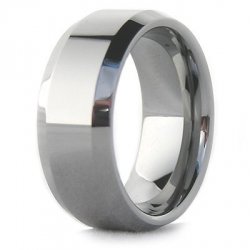Tungsten used to be known as wolfram (from wolframite, said to be named from wolf rahm or spumi lupi, because the ore interfered with the smelting of tin and was supposed to devour the tin). The de Elhuyar brothers found an acid in wolframite in 1783 that they succeeded in reducing to the elemental metal with charcoal.
Tungsten was discovered by Fausto and Juan Jose de Elhuyar at 1783 in Spain. Origin of name: from the Swedish words "tung sten" meaning "heavy stone" (the origin of the symbol W is "wolfram ", named after the tungsten mineral wolframite).
The following uses for tungsten are gathered from a number of sources as well as from anecdotal comments. I'd be delighted to receive corrections as well as additional referenced uses (please use the feedback mechanism to add uses).
- useful for glass-to-metal seals since the thermal expansion is about the same as borosilicate glass
- tungsten and its alloys are used extensively for filaments for electric lamps, electron and television tubes, and for metal evaporation work
- electrical contact points for car distributors
- X-ray targets
- windings and heating elements for electrical furnaces
- missile and high-temperature applications
- high-speed tool steels and many other alloys contain tungsten
- the carbide is important to the metal-working, mining, and petroleum industries
- calcium and magnesium tungstates are widely used in fluorescent lighting
- tungsten salts are used in the chemical and tanning industries
- tungsten disulphide is a dry, high-temperature lubricant, stable to 500°C
- tungsten bronzes and other tungsten compounds are used in paints
- TV tubes (electron tubes)
- X-ray targets

Hanns CEO/Chinatungten.com
